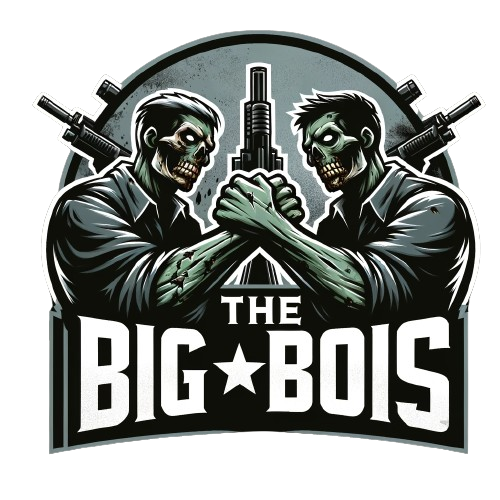If you’ve ever wondered what it might feel like to be the unwilling star of a true-crime podcast, SLACKJAW puts you uncomfortably close to that reality. Developed entirely by a single creator at Nostromo Interactive, this first-person, escape-room-style horror game takes the harrowing premise of surviving a deranged serial killer and condenses it into a tense, one-hour experience that will leave you holding your breath until the credits roll.
The game is inspired by the hit 2024 true-crime podcast My Escape from the Slackjaw Killer, which featured the only known survivor’s chilling account. Using testimony, crime scene photographs, and FBI reports, the developer painstakingly recreates the killer’s environment with disturbing authenticity. It’s a fictionalized experience grounded in unsettlingly real details — the kind of realism that makes you feel like this could be happening in the house next door.

Atmosphere First, Always
The first thing SLACKJAW nails is atmosphere. From the second you “wake up” in the basement prison, every creak of wood above you, every flicker of dim light feels deliberate. The air feels stale. The walls seem to hum with menace. The killer, somewhere upstairs, is an almost constant presence — unseen but always felt. The sound design does a lot of heavy lifting here, with subtle footsteps, distant objects being moved, and occasional disturbing mutters from above.
You’re given a single, terrifyingly simple goal: escape. The elevator pitch may sound straightforward, but the game’s smart environmental storytelling ensures that even when you’re looking for a key or solving a combination lock, you’re still learning more about who this killer is, and what’s at stake if you fail.
Puzzles That Feel Natural
Unlike some escape room-style games that overload you with arbitrary logic puzzles, SLACKJAW keeps its challenges grounded. You’re inspecting objects, searching for codes, piecing together information from newspapers and VHS tapes, and — occasionally — avoiding making too much noise so as not to draw the killer’s attention.
The best moments are when the puzzles tie directly into the fiction. The infamous alarm password puzzle, for example, has a bit of a reputation among players for its trickiness, but it feels appropriate in context. Other puzzles hit that sweet spot of “obvious in hindsight,” giving you a satisfying jolt when the solution clicks.
It’s worth noting that while nothing here is going to stump a seasoned puzzle veteran for long, the approachable difficulty works in the game’s favor. You never break immersion by getting stuck for an hour on an abstract riddle — you’re too busy feeling the killer’s presence pressing down on you.

Short but Tense
The biggest sticking point for most players will be length. SLACKJAW can be finished in about 30–60 minutes on a first playthrough, depending on how quickly you solve the puzzles. For some, that’s going to feel too short given the price point. For others — particularly fans of tightly paced horror experiences like P.T. — that brevity is part of the appeal.
In that short span, SLACKJAW delivers a complete, coherent arc: you’re captured, you explore, you piece together clues, and you make your bid for freedom. There are no filler sections, no padding — just a focused, claustrophobic escape story.
Still, the game’s strongest scenes make you wish there were more. The killer’s unpredictable presence is terrifying, but he’s mostly confined to upstairs, and the moments where you truly feel hunted are fleeting. An expanded version with more varied encounters, additional basement areas, or higher puzzle complexity could elevate SLACKJAW from “great short horror” to “modern indie classic.”
The Killer Upstairs
The “Slackjaw Killer” himself is a fascinating presence. While you never face him directly for long, the details scattered throughout the basement paint a disturbing portrait of his obsession with control, ritual, and psychological dominance. The bloody handprints on doors, the disturbing personal effects, the ominous journal entries — they all make him feel like more than just a generic monster.
One of the game’s neatest touches is that interacting with certain optional objects can actually alert him. This little mechanic injects tension into even the most mundane exploration, making you second-guess whether picking up that bottle or turning on that light is worth the risk.
Technical & Presentation Details
Built in Unreal Engine 5, SLACKJAW looks strikingly real. The lighting is oppressive, the textures are gritty, and the small details — from dust motes drifting in the flashlight beam to the grime on the walls — sell the environment as a real, lived-in (or suffered-in) place.
The only downside is that the hyper-realistic approach occasionally gets in the way of clarity. Some players noted that depth-of-field blur and lighting glare made close inspection of certain objects difficult. While you can zoom in on interactable items, minor adjustments to the visual presentation could improve legibility without losing the gritty look.
The original soundtrack is another highlight — minimal, haunting, and perfectly timed to raise your anxiety without ever turning into a constant jump-scare factory.
The Solo Dev Achievement
Perhaps the most impressive part of SLACKJAW is that it’s the work of a single developer. Every texture, puzzle, lighting setup, and sound cue comes from one person’s vision, and it shows in the consistency of tone. While it’s short, the polish and intentionality on display make it clear that this wasn’t a rushed project — it’s a compact, fully realized horror vignette.
Room for Growth
There’s no denying that SLACKJAW leaves you wanting more — and that’s both its strength and its limitation. The core loop works, the atmosphere is fantastic, and the true-crime framing gives it a unique identity in the horror space. If Nostromo Interactive ever decides to expand on the concept with multiple victims, a more dynamic killer, and additional puzzle layers, they could have a breakout hit on their hands.
SLACKJAW: SLACKJAW is an unnervingly atmospheric escape-room horror game that proves less can be more — especially when “less” means stripping away filler and delivering pure tension. It’s short, yes, and its puzzles are accessible rather than mind-bending, but its combination of true-crime inspiration, unsettling realism, and clever interactive touches make it a must-try for fans of P.T., Visage, and escape-room thrillers. If you can accept the brief runtime and approach it as an intense, one-sitting experience, you’ll find yourself holding your breath, straining to hear the killer’s footsteps, and savoring every creak of the floorboards above. – Obsidian


